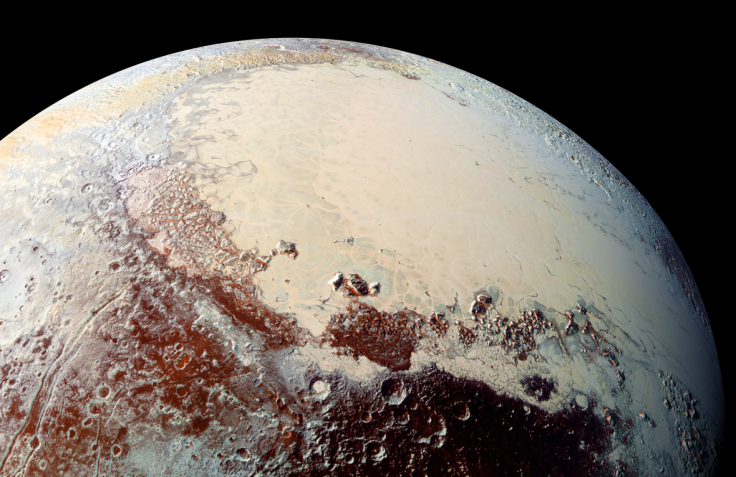Alien Life Found On Pluto? NASA Finds Evidence Of Ammonia Ocean In Dwarf Planet That May Hold 'Novel Life Forms'

Pluto was years ago cast out of the exclusive club of satellites that count as planets in our solar system, but the small dwarf planet still has a heart. That is to say, Pluto has an icy heart-shaped formation on its surface and beneath that heart, a new study suggests, there may be life.
Mounting evidence that there is an ocean beneath Pluto’s surface has led researchers to theorize that some form of life — though likely a different version than humans are aware of on Earth — may exist there, according to reports published Monday and over the weekend. While scientists have argued for a while that the ocean might exist, the recent discovery that the dwarf planet is expanding has added gravity to the claims.
The theories about life came after NASA’s New Horizons mission performed a fly-by of Pluto that indicated the ocean inside may be made of ammonia.
“New Horizons has detected ammonia as a compound on Pluto’s big moon, Charon, and on one of Pluto’s small moons. So it’s almost certainly inside Pluto. What I think is down there in the ocean is rather noxious, very cold, salty and very ammonia-rich — almost a syrup,” William McKinnon, the author of two Pluto studies that were published in the journal Nature this month, told Phys.org.
“It’s no place for germs, much less fish or squid, or any life as we know it,” he continued. “But as with the methane seas on Titan — Saturn’s main moon — it raises the question of whether some truly novel life forms could exist in these exotic, cold liquids.”
Titan isn’t the only moon in the solar system that has caught the eye of researchers. Photographs released in September noted that Europa, a moon on Jupiter, may have a subsurface ocean capable of fostering organic life as well.
© Copyright IBTimes 2025. All rights reserved.





















